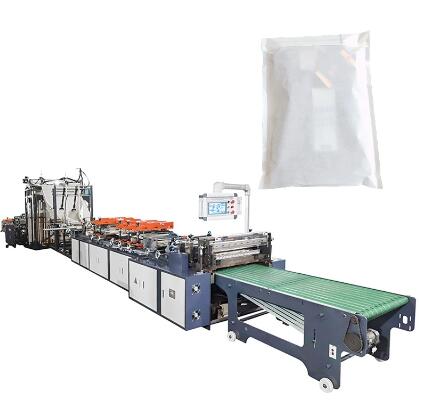Crafting Clarity: The Art and Science Behind Transparent Paper Garment Bag Production
2024-01-09
Introduction:
In the realm of garment packaging, the visual appeal of transparent paper bags is paramount. Competitive Transparent Paper Garment Bag Making Machines have revolutionized the industry by mastering the art of ensuring transparency and clarity in the produced garment bags. In this blog post, we unravel the intricate processes and technologies that contribute to the creation of bags that not only protect but also showcase garments with unparalleled transparency.
1. Precision in Material Selection:
The journey toward transparency begins with the careful selection of transparent paper materials. These machines are designed to handle a variety of materials, each chosen for its clarity, durability, and ability to maintain transparency even after the bag is formed.
2. Advanced Material Feeding Mechanisms:
To ensure clarity, the material feeding mechanisms of these machines are engineered with precision. Sensors and automated controls guarantee a smooth and consistent feed of the transparent paper, minimizing wrinkles, folds, or other distortions that could compromise transparency.
3. Adjustable Tension Control:
Transparency is directly influenced by the tension of the transparent paper during the manufacturing process. Garment Bag Making Machines incorporate adjustable tension control mechanisms to accommodate different paper thicknesses and characteristics, ensuring that the material remains taut and transparent.
4. Innovative Heat Sealing Technology:
The joining of transparent paper sheets is a critical step in bag formation. These machines leverage advanced heat sealing technology to create seamless and transparent bonds. The controlled application of heat ensures that the transparency of the material is preserved, resulting in clear and aesthetically pleasing garment bags.
5. High-precision Cutting Mechanisms:
Precision cutting is essential to maintaining the clarity of the produced bags. Transparent Paper Garment Bag Making Machines employ high-precision cutting mechanisms, often driven by digital servo motors, to ensure clean and consistent cuts. This meticulous cutting process contributes to the overall transparency of the bags.
6. Anti-Static Measures:
Static electricity can attract dust and particles, compromising the transparency of the garment bags. To counter this, these machines often incorporate anti-static measures to minimize the build-up of static charges, keeping the transparent paper clean and clear throughout the production process.
7. Quality Assurance Sensors:
Real-time quality assurance is achieved through the integration of sensors that monitor transparency levels. These sensors detect any irregularities or defects in the transparent paper, allowing for immediate corrective actions and ensuring that only bags with the highest transparency standards make it to the final product.
8. Automated Inspection Systems:
Some machines are equipped with automated inspection systems that scrutinize the transparency of each bag as it is produced. This additional layer of inspection guarantees that the bags meet stringent transparency criteria, meeting the expectations of both manufacturers and end-users.
Conclusion:
Competitive Transparent Paper Garment Bag Making Machines are not merely tools of production; they are artists in the craft of transparency. Through meticulous material handling, advanced technologies, and a commitment to precision, these machines elevate the transparency and clarity of garment bags to new heights. As fashion and retail continue to demand packaging excellence, these machines stand as beacons of innovation, ensuring that the garments within are not just protected but also showcased with unparalleled clarity.



